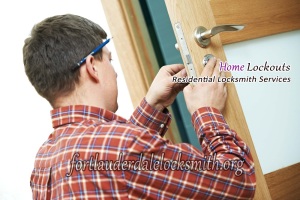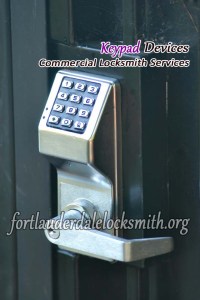If you’ve been looking to buy the best locks for your home or business, it can be daunting trying to find what’s exactly right for you. There is virtually an endless list of various types of locks: pin-tumbler locks, wall-mounted locks, bump-proof locks, high-security cylinders, lever-handled locks, interchangeable core cylinder locks, padlocks, cam locks, rim locks, mortise locks, doorknob locks, key-in-knob cylinder locks, combination locks, keycard locks, switch locks, deadbolts, biometric locks, and on and on. Some of the most recognized brands are:

- Ace
- American
- Arrow
- ASSA
- Baldwin
- Ilco
- Falcon
- Kwikset
- Master
- Medeco
- Primus
- Schlage
- Yale
When it comes to protecting your property, any expert locksmith will tell you that the best line of defense is to install deadbolt locks. The reason these premium locks are called “dead” is because they don’t have springs to operate the bolt; in other words, a deadbolt is operated manually ~ with a thumbturn or key.
Locksmith professionals most commonly recommend that you install deadbolts on all your outside doors. There are a good number of deadbolt types. The most well-known deadbolts are jimmy-proof, single-cylinder, double-cylinder, and lockable thumbturn.

- A jimmy-proof deadbolt is a surface-mount lock, which you’ll often see in an apartment building and on double doors. A surface-mount lock means that the lock screws inside the door, instead of with an intricate drill pattern, like an ordinary deadbolt. A jimmy-proof deadbolt is popular because only minor door modifications or required. In this type of deadbolt, the deadbolt interlocks with the jamb bracket. It’s a dependable lock that’s not easily pulled apart and quite difficult to force from the outside.
- A single-cylinder deadbolt lock is a regular deadbolt lock with a key cylinder on the outside, and a thumbturn on the inside to open or close it. This kind of deadbolt is typically used on a solid metal or wooden door. Its only drawback is that if there’s any access to the inside (such as through a window that’s in or near the door) then the door can be opened using the thumbturn.
- A double-cylinder deadbolt goes farther. This kind of deadbolt has a key cylinder both on the inside and on the outside of the door. Therefore, if it’s locked, the double-cylinder always requires a key to open the door from the inside. It’s the best choice if you have a door with any glass in it, or if there is a window nearby, because a burglar can’t break the glass and reach in to unlock it. Its one minor downside is that you’ll have to remember to always keep an extra key available on the inside, whenever people are home, so everyone will be able to get out of the house safely in case of fire or any other emergency.
- Let’s take a look at the lockable thumbturn deadbolt, which is basically a combination of the single-cylinder and the double-cylinder deadbolt. This deadbolt provides optimum security and flexibility. With a thumbturn on the inside, it works just like a single-cylinder deadbolt, but you can lock it with a key, so that the thumbturn won’t unlock or lock the door, unless you have the key, too. Furthermore, the thumbturn can be left in the unlocked position while people are inside, but it will still work like a standard single-cylinder deadbolt. That means, whenever you leave, especially if you’ll be away for a long time, the thumbturn can be easily locked.
These are all smart choices in deadbolts ~ but there are plenty more. Topnotch locksmith professionals also recommend the following deadbolt types: rim, mortise, vertical, keyless, and digital.
- Easy to install, the rim deadbolt is bolted to the inside face of the door. The great thing about this kind of deadbolt is that it automatically locks behind you whenever you shut the door, so you can’t ever forget to lock it. (If you often forget your keys, you may not like this one so much!)
- A mortise deadbolt is an excellent choice, because it’s not easily tampered with. Rather old-fashioned in style, you can install this sort of deadbolt in a mortise or recess pocket, cut in the door’s edge. It indeed has extra resilience; but its shortcoming is that you have to penetrate the door frame to make a large hole, which means it may slightly weaken the structure of the door.
- A vertical deadbolt lock is bolted to the inside face of the door, like the rim deadbolt is; but it’s placed on top of the door, making it impossible for an intruder to force it open by placing a bar between the frame and the door. This type of deadbolt is also a cinch to install. A small disadvantage to both the vertical deadbolt and the rim deadbolt is that they’re rather bigger than normal, so some people think they’re unattractive.
- A keyless deadbolt lock is mounted on the inside of the door, but it has a keypad instead of a keyhole. It unlocks when you type in your secret code, rather than turning a key. Since you don’t use a key at all, you won’t ever have to worry about losing your keys again. Another benefit is that, to optimize security, you can change the passcode as often as you wish.
- A digital deadbolt is similar to a keyless deadbolt, with a keypad; but this type requires electricity or batteries. Make sure you always keep the batteries charged, or you’ll be in big trouble in case of a power outage! Another disadvantage to such electronic devices is that there’s a slim chance it could be hacked.
We’ve given you a simple overview here. There are dozens more kinds of locks, one to fit every purpose and locale. If you want to make smart decisions about the ideal locks for your place of residence or your commercial property, it’s good to hire a local Fort Lauderdale reliable locksmith. If you live anywhere in Fort Lauderdale, Florida, you might want to make an appointment with a dependable locksmith such as the mobile experts on staff at Optimal Locksmith Pro, where free consultations are available.
Aricle source here: THERE ARE MANY KINDS OF LOCKS AVAILABLE

No comments:
Post a Comment